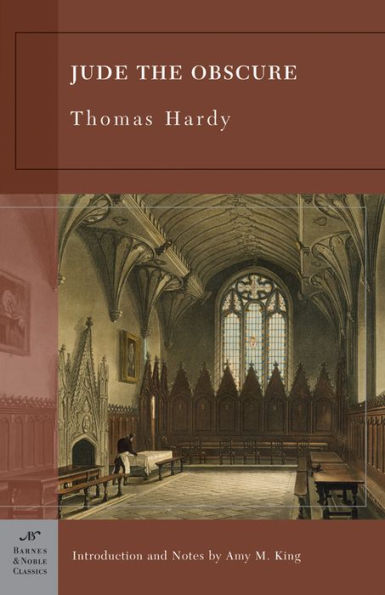Jude the Obscure, by
Thomas Hardy, is part of the
Barnes & Noble Classics series, which offers quality editions at affordable prices to the student and the general reader, including new scholarship, thoughtful design, and pages of carefully crafted extras. Here are some of the remarkable features of
Barnes & Noble Classics:
- New introductions commissioned from todays top writers and scholars
- Biographies of the authors
- Chronologies of contemporary historical, biographical, and cultural events
- Footnotes and endnotes
- Selective discussions of imitations, parodies, poems, books, plays, paintings, operas, statuary, and films inspired by the work
- Comments by other famous authors
- Study questions to challenge the readers viewpoints and expectations
- Bibliographies for further reading
- Indices & Glossaries, when appropriate
All editions are beautifully designed and are printed to superior specifications; some include illustrations of historical interest.
Barnes & Noble Classics pulls together a constellation of influences—biographical, historical, and literary—to enrich each readers understanding of these enduring works.
Virginia Woolf called him “the greatest tragic writer among English novelists,” but Thomas Hardy was so distressed by the shocked outrage that greeted Jude the Obscure in 1895 that he decided to quit writing novels. For in telling the story of Jude Fawley, whose many attempts to rise above his class are crushed by society or the forces of nature, Hardy had attacked Victorian society’s most cherished institutions—marriage, social class, religion, and higher education.
A poor villager, Jude Fawley longs to study at the elite University of Christminster, but his ambitions are thwarted by class prejudice—and an earthy country girl who tricks him into marriage by pretending to be pregnant. Entrapped in a loveless marriage, he becomes a stonemason and falls in love with his cousin—the intellectual, free-spirited Sue Bridehead, who is also unhappy in marriage. Sue leaves her husband to live with Jude and eventually bears his children out of wedlock. Their poverty and the weight of society’s disapproval begin to take their toll on the couple, forcing them into a shattering downward spiral that ends in one of the most shocking scenes in all of literature.
A stunning masterpiece, Jude the Obscure is Hardy’s bleakest and most personal novel.
Amy M. King is an Assistant Professor of Literature at the California Institute of Technology, and the author of Bloom: The Botanical Vernacular in the English Novel, forthcoming from Oxford University Press. She is also the author of articles on eighteenth- and nineteenth-century British literature and culture, and has taught widely in the English novel at Haverford College and Caltech. King received her doctorate in 1998 from Harvard University in English and American Literature and Language.







